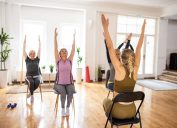7 Best Exercises to Improve Your Balance, According to Fitness Experts
From Tai Chi to planks, these are the balance-building moves to try.

As we age, balance becomes an increasingly important aspect of our health. Suffering from a fall or bone fracture can, in turn, kick off other serious health problems, lead to long-term disability, and even increase mortality risk. To make matters worse, the National Institutes on Aging (NIA) points out that more than one in four people over the age of 65 suffer a fall each year—which is one reason why it's so important to consider balance exercises.
Another is the "alarming number of Americans sitting for eight hours a day," points out Joy Puleo, NPCP, ACSM, a pilates instructor and Balanced Body Educator at Balanced Body, which she says "leads to muscle weakness and imbalances, leaving us vulnerable to chronic discomfort and pain."
To ensure you're staying physically active and steady on your feet, we consulted Puleo and other fitness experts to find out the best balance exercises for seniors and beyond.
RELATED: 9 Best Resistance-Band Workouts for Weight Loss, Fitness Experts Say.
1
Tai Chi
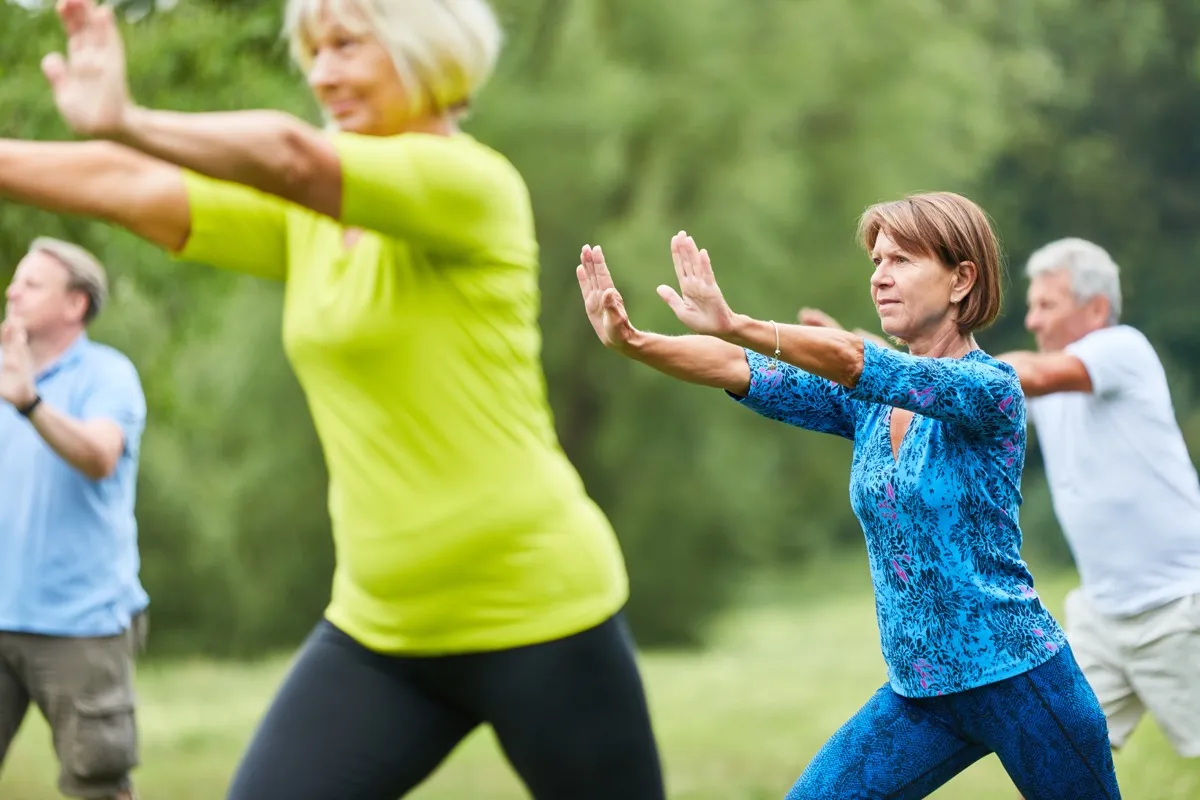
Shifu Shirley Chock, a master Tai Chi practitioner, says that practicing Tai Chi is one of the best ways to build balance—and you can apply its core principles to any balance-building exercise you try.
"When you watch a Tai Chi expert flow in their movements, often the first thing that mesmerizes you is the extraordinary control of their balance. They are able to fully shift their weight from one leg to another with immense control, yet it looks like effortless gliding," says Chock.
They are able to do this because Tai Chi teaches three key factors to help balance: rooting, central alignment, and releasing tension.
Chock compares the first principle, rooting, to a tree weathering a fierce storm that rips through a forest.
"The trees that will remain standing are the ones with healthy, deep roots," she explains. "In Tai Chi, we train to feel our body's connection into the ground much farther down than the contact point where your foot touches the floor."
Another important principle in Tai Chi is maintaining central equilibrium alignment.
"The more your body tilts and sways as it moves, the more likely you will lose your balance. The more you can keep your body's central alignment perfectly straight and still while you move, the more likely you will maintain your balance," Chock adds.
Finally, Tai Chi also trains you to identify where you're holding tension in your body and how to release that tension.
"Have you ever noticed when you lose your balance, your default reaction is to tense up? When you tense up, that added tightness and tension in your body will cause you to lose your balance more," says Chock. "When you are able to train your body to identify tension and release it, you are much better prepared to come back into balance when you start to feel you are losing it."
RELATED: 8 Simple Exercises That Will Make Your Joints Feel Better.
2
Single leg balance exercises
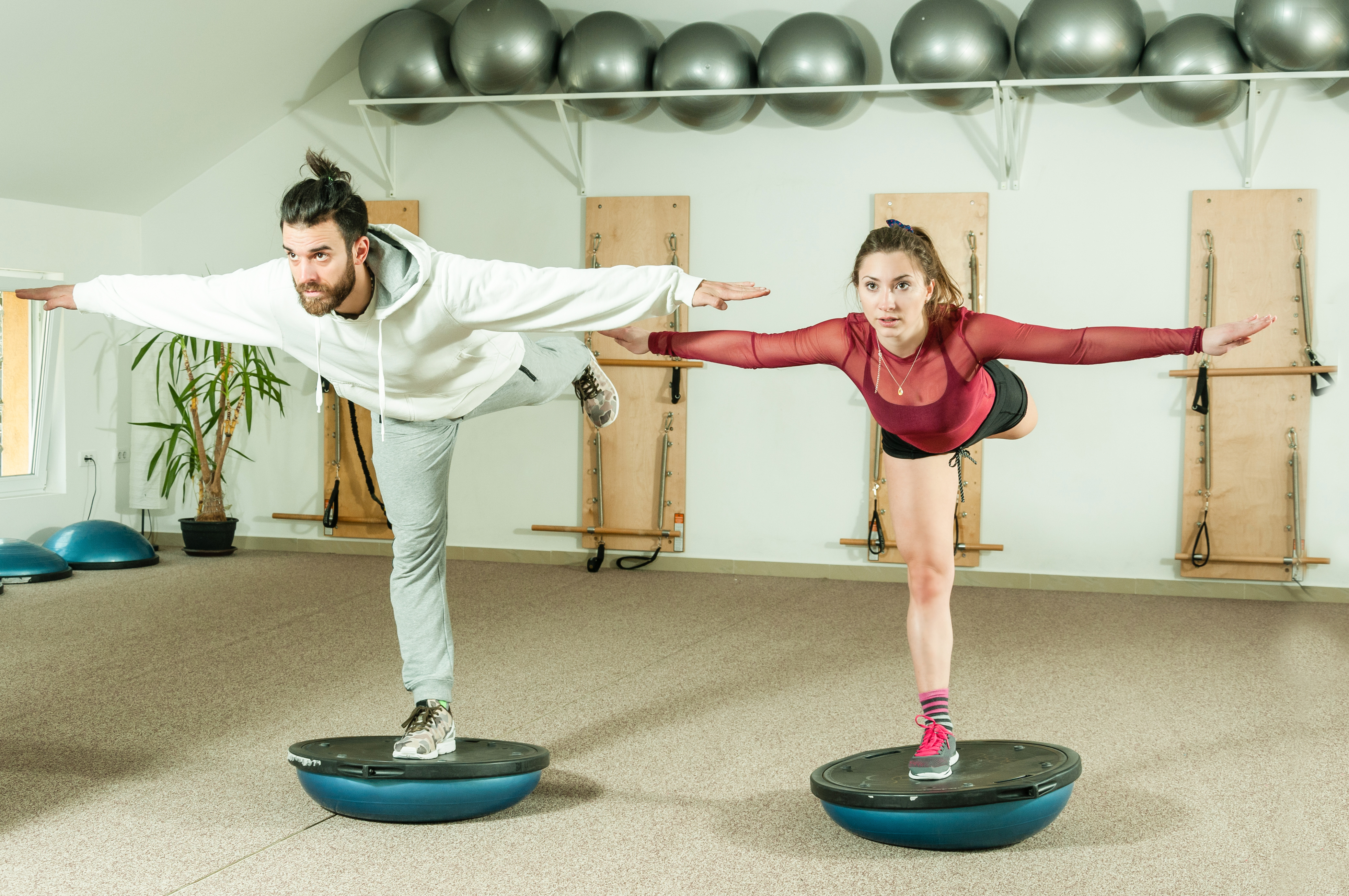
Even simple exercises can help improve your balance if you do them regularly, says Andrea Lepcio, founder and owner of Mighty Fit. Single-leg balance exercises can help beginners find their center and build their balance endurance.
"Begin by standing near a chair or a wall. Lift one foot and balance for as many seconds as you are able. Take a break standing on both legs, and then try the other leg," Lepcio advises.
To add variety and challenge to this simple exercise, you can try standing on an unstable surface.
"Using a BOSU ball flat side up, step on with just one foot," suggests Hayley Akradi, Life Time classes operations manager and Ultra Fit instructor. "Your body will shake for a while as it connects the dots to your brain. Embrace the shakes and start to hinge your body, reaching your hands to your toes and come back up. This can also be done on the floor or on a squishy pad or mat."
3
Standing roll down
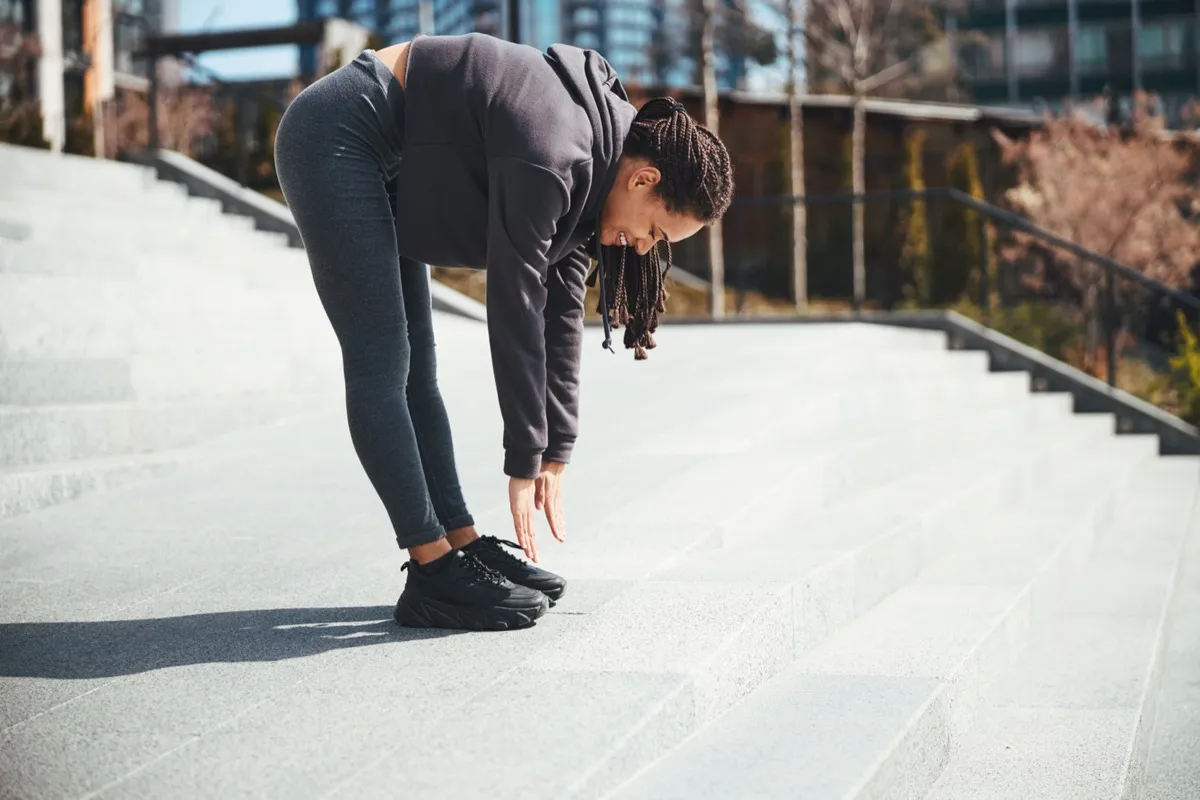
Next, Puleo recommends standing roll downs, which can help you both build balance and increase spinal flexibility.
To try it, "take a moment to take stock in your standing posture," Puleo says. "Nod your head, then imagine rolling through your spine, one vertebra at a time. Roll down as far as comfortable and stop if you experience any back pain. As you roll down, imagine drawing abdominals in and up to support front of spine."
She notes that if the floor seems too far away, you can stand close to a desk and roll down until your hands meet the desktop. Once the desk is achievable, then try for something lower, such as a chair seat, and finally, the floor.
"To reverse, plant feet firmly into the ground and start to roll up [the] spine," she adds. "As you return to standing, imagine stacking one vertebra on top of the one below it. Three to five of these are plenty."
RELATED: 9 Best Bodyweight Exercises You Can Do Anywhere, Fitness Experts Say.
4
Rock the boat
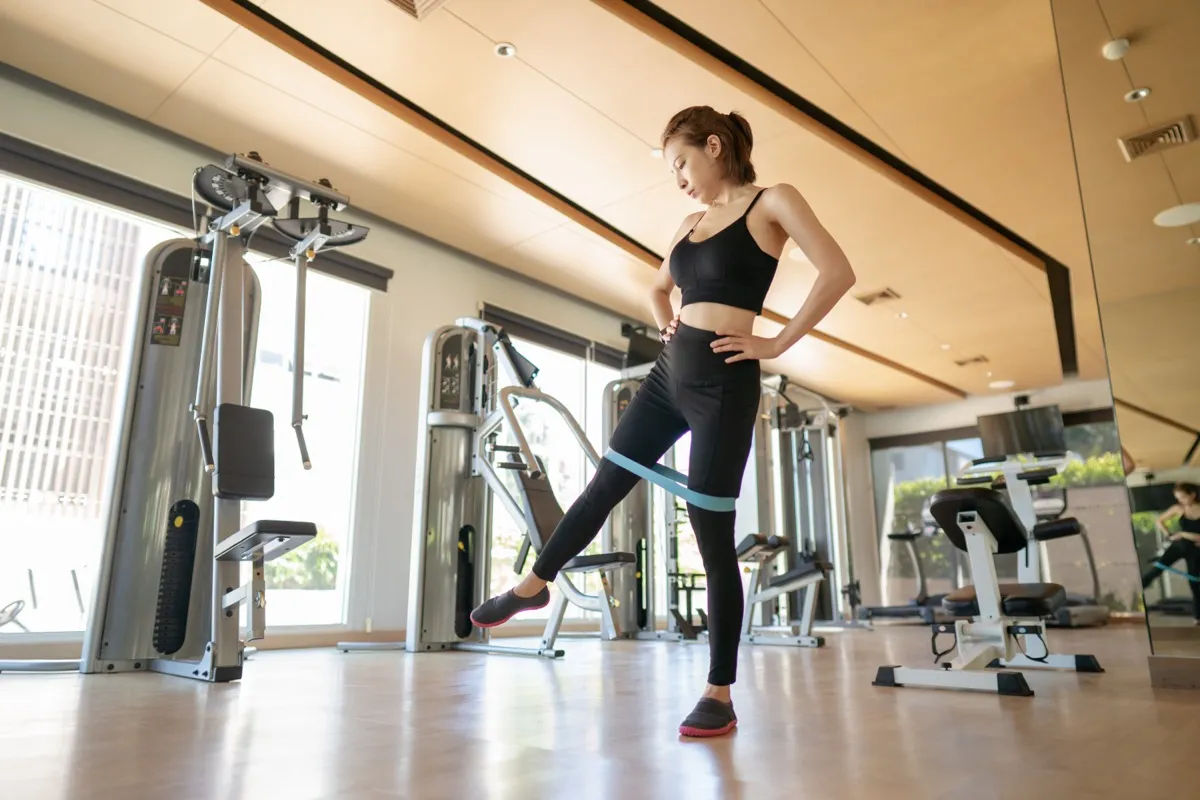
Lepcio next suggests a balance exercise known as "rock the boat." This will challenge you to re-center your body as you shift your weight from leg to leg.
"Stand on both legs to start. If you are feeling unstable, position yourself near a wall or a chair," she suggets. Then, in a slow, steady motion, lift one leg out to the side and hold it there. Bring it back down and do the same on the other side.
"You rock back and forth between each leg. As you get stronger, you can hold the leg in the air for up to 30 seconds before stepping and lifting the second leg the same amount," Lepcio says. Adding a resistance band will also help you build muscle strength as you go.
5
Balance walk
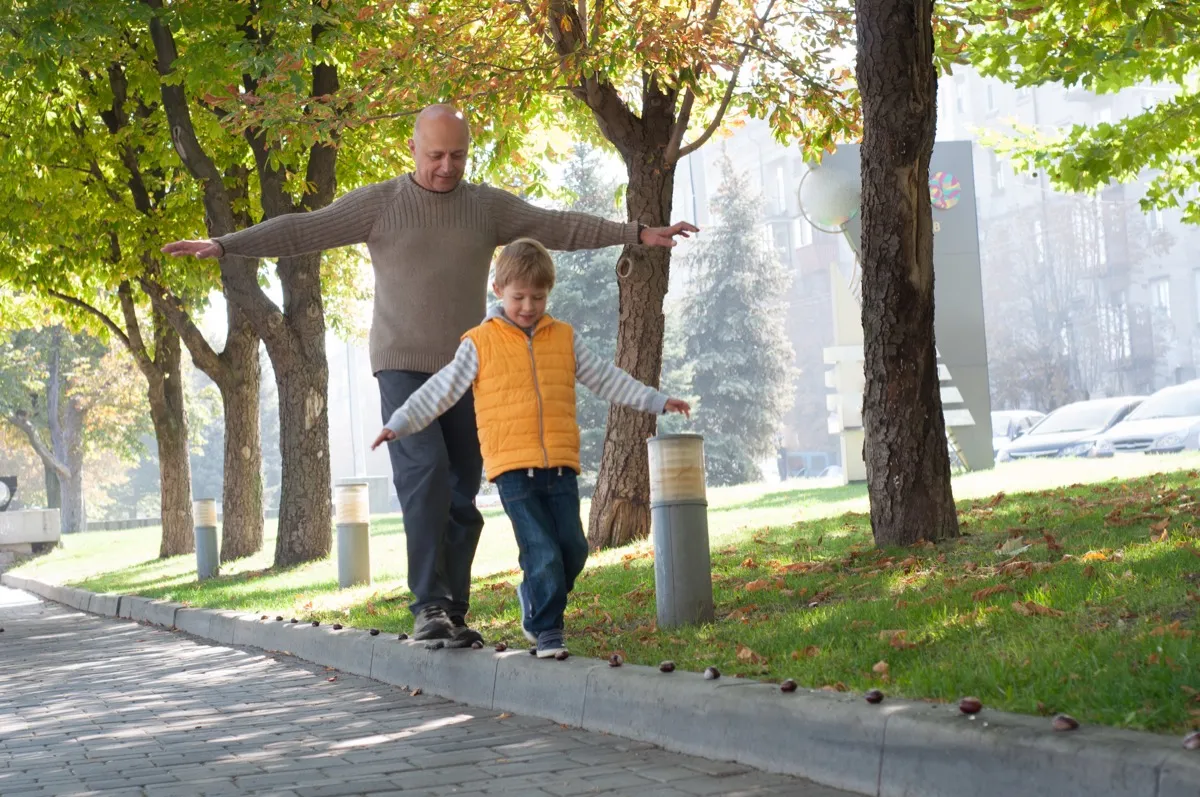
Balance walks are another easy exercise you can use to improve your balance at home.
"Walk forward slowly by placing the heel of one foot right ahead of the toe of the other foot. Step forward similarly, placing each foot right in front of the other," Lepico suggests. "If you feel unsteady, walk closer to a wall so you can put your hand on the wall when uncertain. As you gain confidence, try slowly turning your head from side to side as you progress forward."
Lepcio notes that "the ultimate test" is stepping forward in this manner with your eyes closed. However, it's important to first clear a space of any trip hazards to safely do so.
RELATED: 6 Best Walking Workouts for Weight Loss.
6
Tree pose
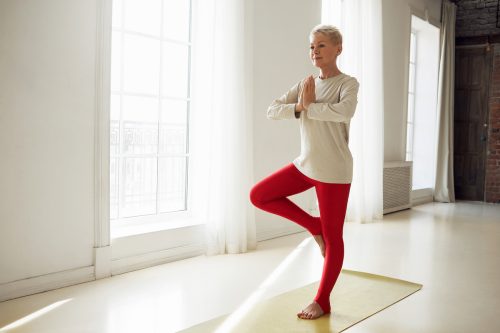
Yoga offers plenty of opportunities to improve your balance, and tree pose is an especially beneficial position.
"Tree is a yoga pose that involves balancing on one leg by placing the foot of the other leg against the standing leg," explains Lepico.
"You can start using that foot like a kickstand against the standing ankle. When you have better balance, you can place that foot on the shin of the standing leg. You can be near a wall or a chair for support," she shares. "As you get stronger, you can place the foot on the thigh of the standing leg. Arms can be down by your side, palm to palm in front of your heart, or lifted overhead."
7
Planks

To do a plank, you hold your body off the ground by balancing on your feet and your hands or elbows. If you do it daily, the challenge of holding that position to exhaustion can help you feel increasingly steady in your body movements.
Planks are also an excellent form of isometric exercise to help build core strength over time. This should, in turn, help improve your balance and stability and reduce your risk of injury.









